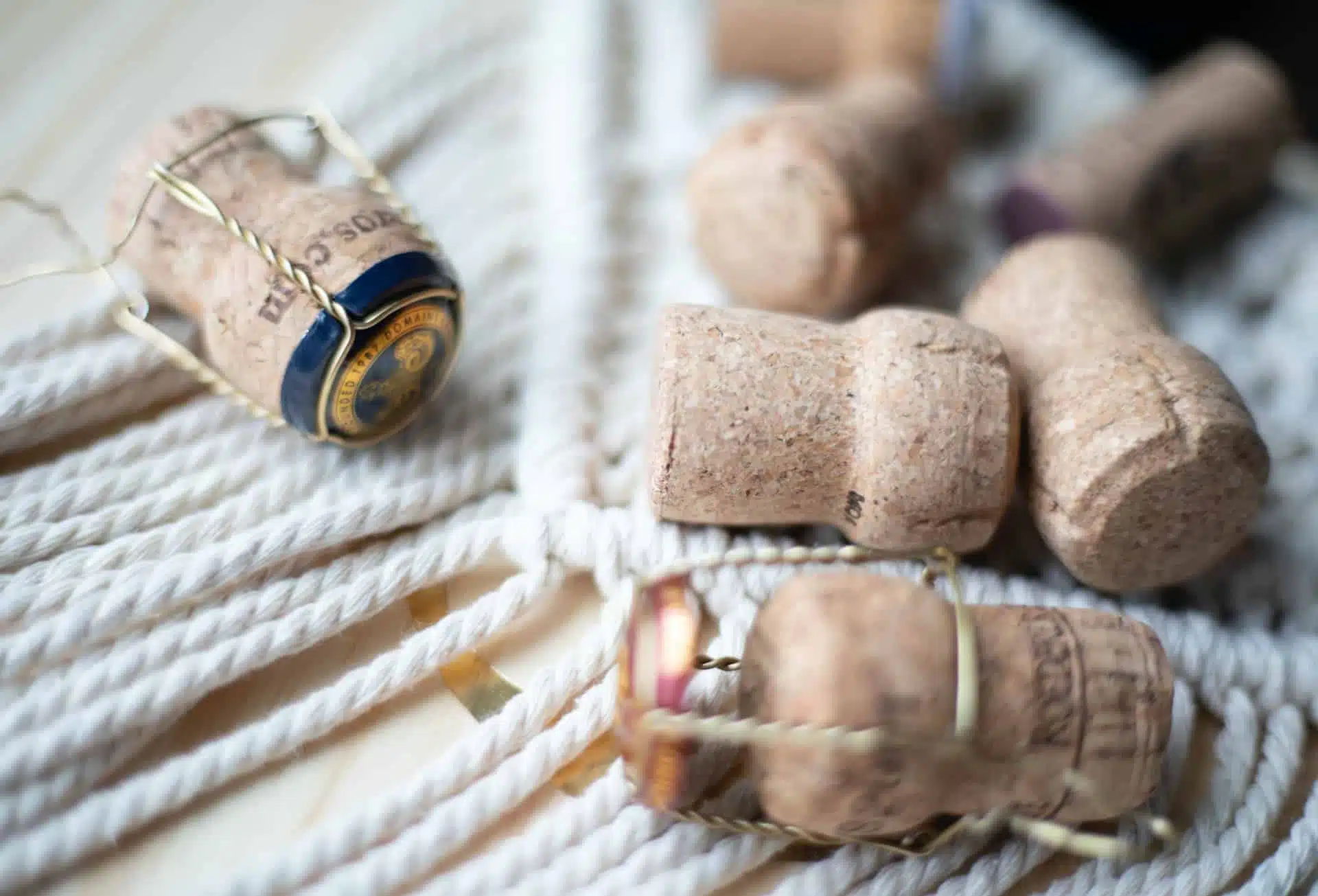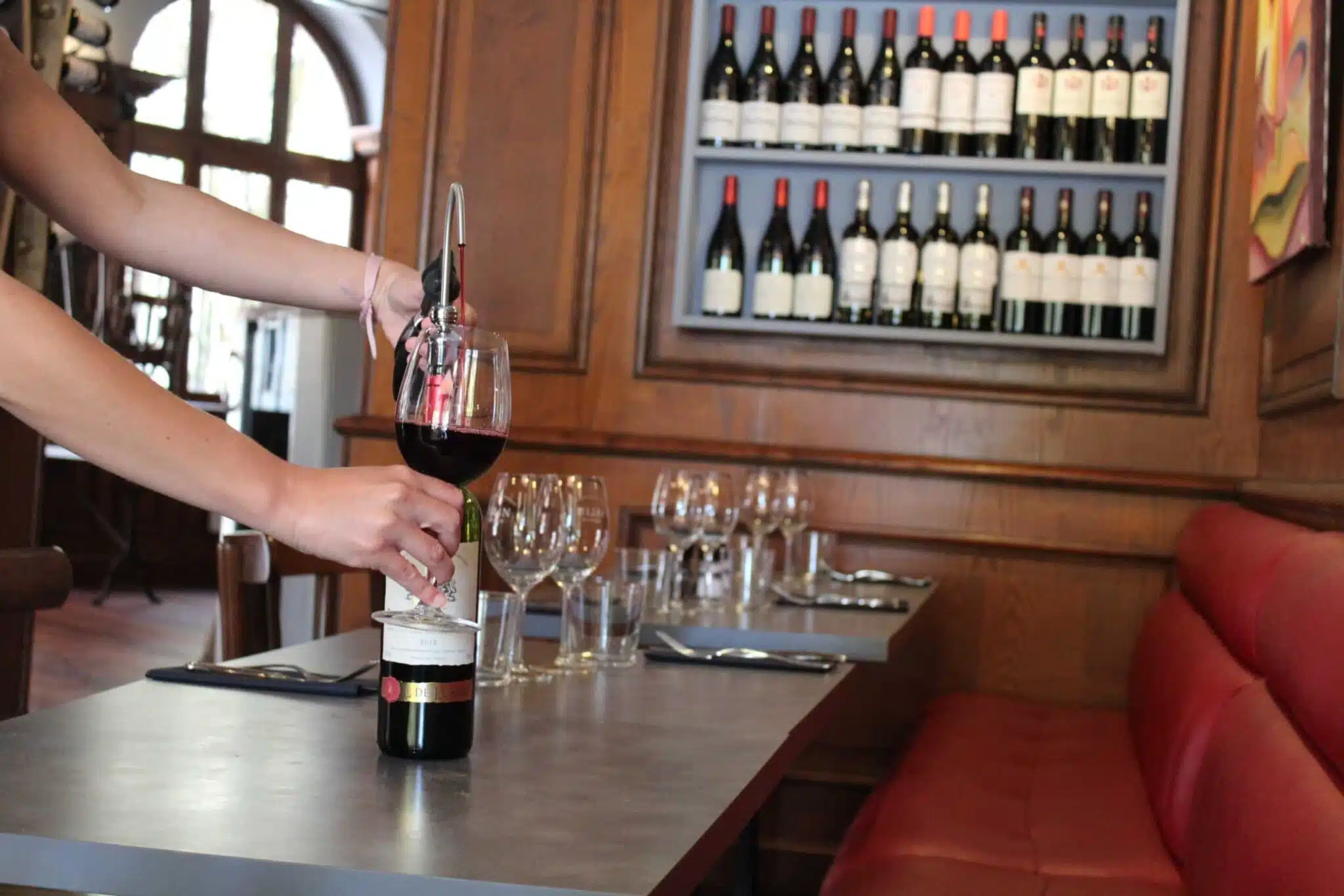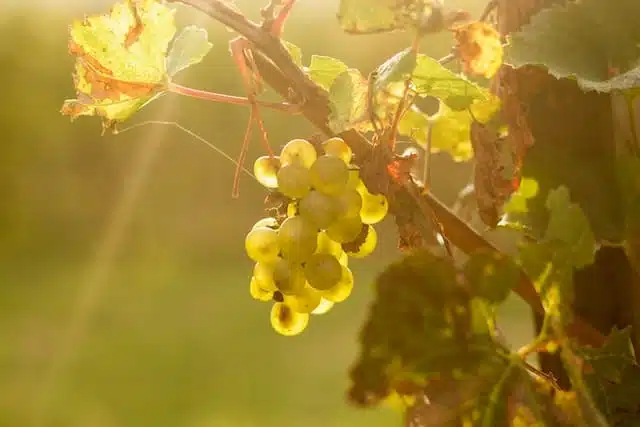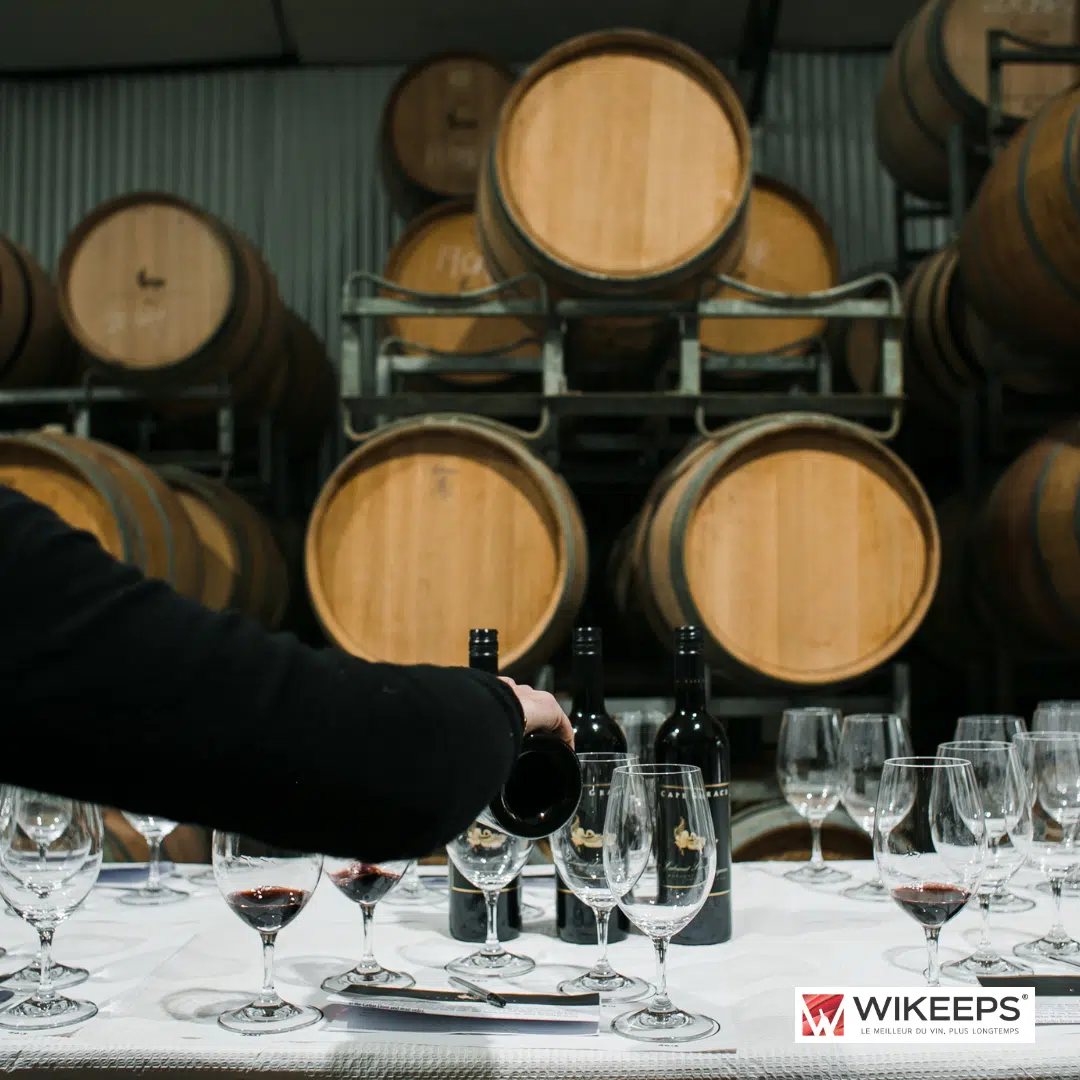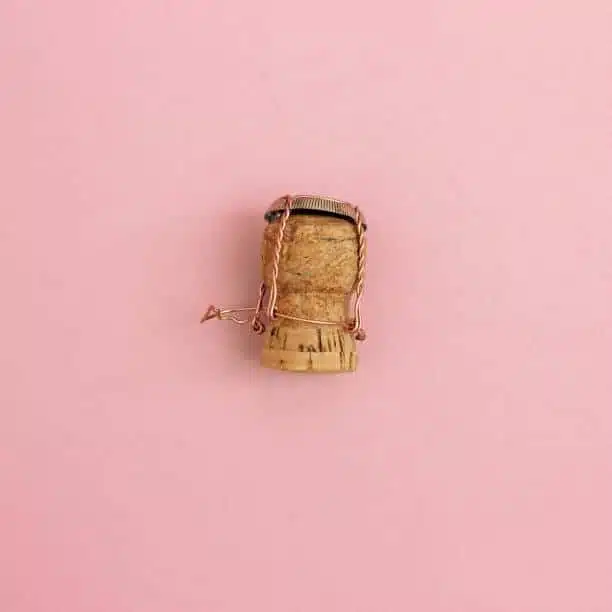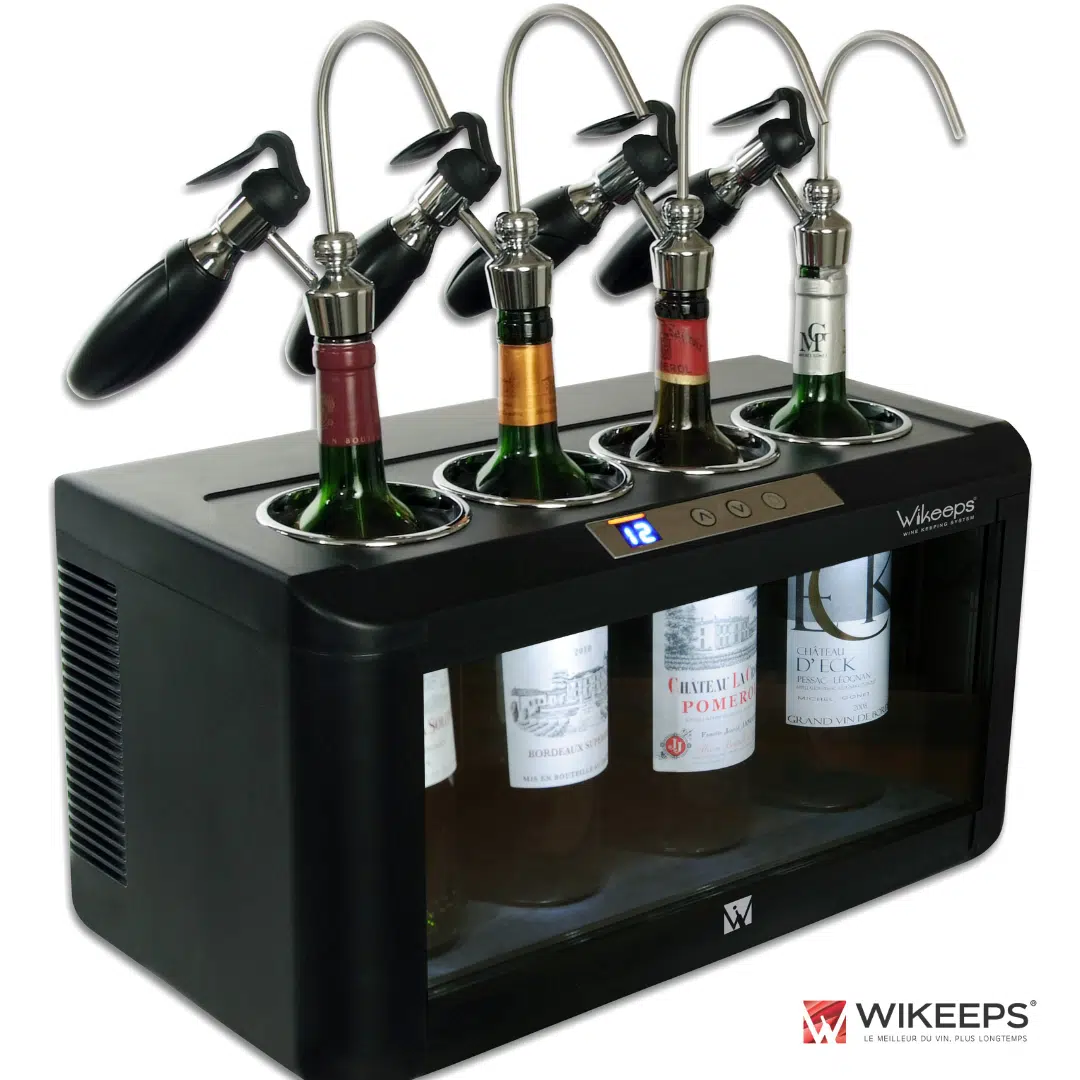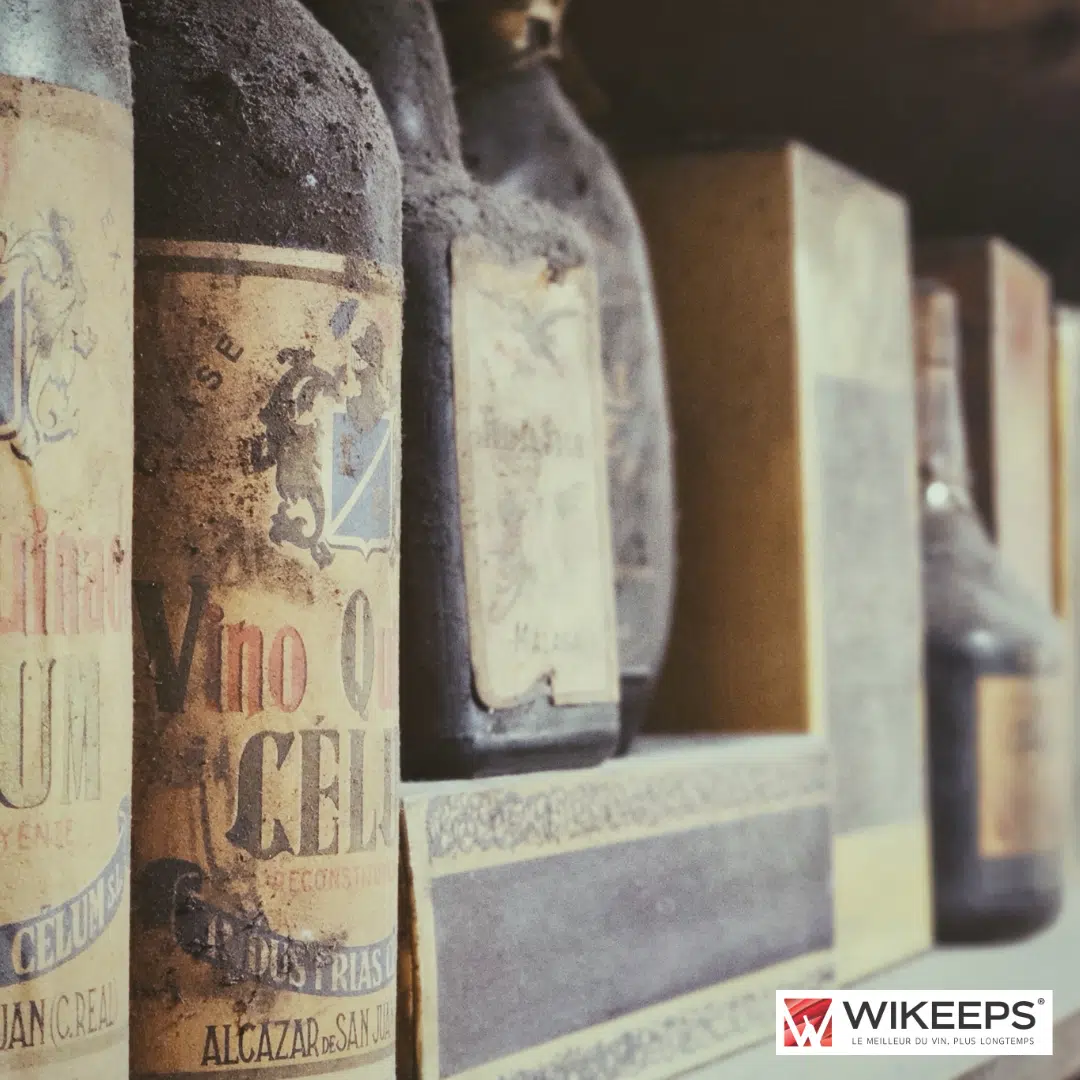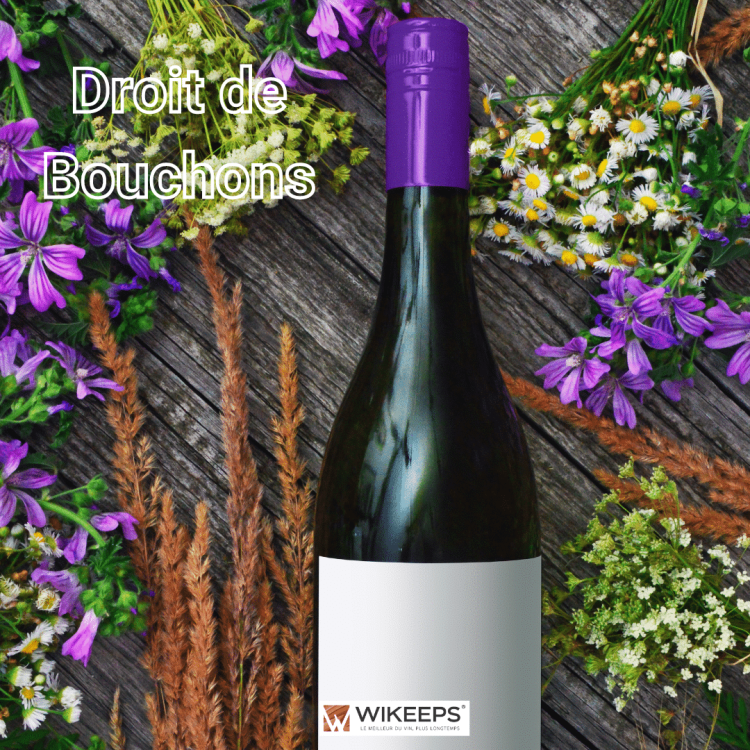Introduction When it comes to champagne, the cork is essential. Without it, champagne would not be what it is today. In this...
Blog
Wikeeps® is above all a story of wine lovers
How to store champagne and effervescence definition?
Defining effervescence? Effervescence refers to the production of bubbles or foam by a substance, particularly when mixed with a...
Wine preserver system
Why a wine preserver system ? After all, it's a fairly common situation: once the bottle has been opened, it's considered safe...
Argon Wine Preservation System: How Inert Gas Protects Your Bottles
Discover how argon-based wine preservation systems prevent oxidation and keep opened bottles fresh for weeks. Expert insights on Coravin-compatible technology and professional solutions.
How to choose the best wine for every occasion
Choosing the right wine for every occasion can be a challenge. The varieties, flavors, prices, and selection process may seem...
Summer wines: what to choose? Wikeeps gives you some ideas!
Introduction In this hot month of August, enjoying a glass of wine on the terrace is always pleasant. However, it is obvious...
The best Essential accessories for a wine taster
Essential accessories for a wine taster When you decide to become an experienced wine taster, it's important to understand the...
Discover the best red wines by region to accompany your meals
Looking for the perfect wine to accompany your dinner? You've come to the right place! In this article, we take a look at the...
How Much Champagne Per Person: Complete Bottle Guide for Events
Calculate exactly how many bottles of champagne you need per guest for toasts, receptions, and dinners. Complete guide with formulas, bottle sizes, and preservation tips.
Champagne Capsule: From Protection to Preservation and Collecting
Discover how champagne capsules protect bottles, preserve quality and fuel passionate collecting—plus modern preservation systems that keep your bubbles alive for days.
Why use argon gas?
Argon, an inert noble gas, is used in a multitude of industries thanks to its unique properties. From wine preservation systems...
Discover the advantages of different types of wine by the glass machines
As consumer interest in wine increases, so does the demand for wine by the glass machines. Wine by the glass machines offer a...
Best Wine Brands for Consistent Taste Direct from Wineries
Discover how to buy consistent, quality wines directly from wineries—covering estate control, varietal focus, ageing practices, and top producers for reliable taste profiles year after year.
Buying wine directly from the winery offers exclusive access to authentic expressions and often better value, but ensuring consistency in taste from bottle to bottle and vintage to vintage requires careful selection. Estate control, clear varietal focus, low-yield old vines, designated ageing regimes, and a house stylistic signature are the key factors that drive repeatable flavour profiles. In this guide, we’ll walk you through the criteria for identifying reliable winery sources, highlight producers and bottlings known for consistency, and share practical steps to maximize your direct-from-winery experience.
After reading this article, you will understand:
- What makes certain wineries deliver consistent taste year after year
- How to evaluate estate control, terroir-driven cuvées, and winemaking practices
- Which top wines, varietals, and producers are celebrated for dependable quality
- Practical ordering, storage, and tasting protocols to preserve and reproduce winery-fresh flavour at home
What drives consistency in taste when buying direct from wineries?
Consistency begins at the source. When a single team controls both viticulture and vinification—from vine to bottle—repeatability increases dramatically. Estate control and close grower relationships mean harvest timing, parcel selection, and fermentation choices follow a defined protocol season after season. Single-vineyard bottlings, such as Cepas Single Vineyard Malbec from Mendoza, illustrate this principle: one site, one set of vines, and one winemaking hand produce a predictable regional character year after year.
Terroir-driven cuvées with clear varietal focus—like Pinot Noir Jaffelin Vin de France or Nero d’Avola Rupe Secca Sicilia—deliver recognizable profiles because grape and origin are explicitly labeled and respected in the cellar. Low-yield old vines further stabilize outcomes: older, carefully farmed parcels (for example, Las Martas Garnacha from 70+ year-old vines) concentrate flavour and reduce vintage-to-vintage swings.
Designated ageing regimes add another layer of predictability. Formal categories such as Crianza or Gran Reserva, or stated months in oak, give a controlled texture and oak signature. Marqués de Tosos Gran Reserva, Cariñena 2017, exemplifies how clear age statements produce a repeatable tannin structure and vanilla-toast profile across releases.
Finally, an established house stylistic signature and winemaker continuity yield dependable, recognizable flavour footprints. Think of Château Hyot Castillon or Mas Carlot Rouge Générations—both maintain a core cuvée identity that loyal buyers can trust vintage after vintage.
Winemaking and cellar practices that stabilize flavour profiles
Blending strategy is a powerful consistency tool. Blending varieties, parcels, or reserve wines smooths vintage swings and keeps the house style intact. Large estates and flagship blends employ this technique to deliver luxury red wine with a uniform sensory fingerprint, even when individual harvest conditions vary.
A consistent oak programme—fixed choices between new and used French oak, set months in barrel, and controlled bâtonnage—standardizes vanilla, toast, and tannin texture. Controlled fermentation vessels (stainless steel for zippy Sancerre, concrete or specific barrel regimes for richer wines) preserve target fruit or texture with minimal deviation.
Harvest timing, malolactic fermentation decisions, and acid management also matter. Deliberate early picking, controlled MLF, and legal acid adjustments maintain perceived acidity and balance in both hot and cool years, ensuring each bottle tastes fresh and structured.
Packaging choices influence consistency too. Magnums and careful bottling preserve freshness and steady evolution. Producers offering magnum flagship releases—such as Nyetimber and Squerryes—often show more consistent aging trajectories than standard 750ml formats.
How to identify wineries that deliver consistent taste
When shopping direct from a winery, look for clear signals of reliable practices. A long-running estate, family ownership, or explicit quality guarantees are strong proxies for consistent methods. Producers like Félix Solís and Mucho Mas have built reputations on dependable house styles and transparent warranties.
Official classifications and regulated appellations—DOCG, DOC, IGT, or village-level labels—limit stylistic drift. Sancerre, Bonarda dell’Oltrepò Pavese, and Lugana designations impose production standards that protect regional character and repeatability.
Estate, single-vineyard, or aged bottlings imply controlled sourcing and stable vinification compared with experimental small-lot releases. Flagship cuvées are designed to represent the house at its best and most consistent. Dedicated product lines, structured SKUs, and 6- or 12-bottle cases reduce variation between bottles and vintages, making it easier to reorder with confidence.
Technical transparency matters. Wineries that publish harvest dates, pH/TA, vinification details, and ageing notes make it easier to predict future releases. Wine tasting notes and technical sheets provide a roadmap for expected aromas, structure, and aging potential.
Practical steps to maximize consistent taste when ordering direct
Order the same SKU and vintage in cases of six or twelve to minimize bottle-to-bottle and lot variation. Prefer
Ageing wines definition and characteristics
Ageing wines are precious wines that require specific storage and maturation to reach their full potential. Tasting a vin de...
Essential Wine Accessories: Complete Guide for Tasting & Preservation
Discover must-have wine accessories—glasses, corkscrews, aerators, preservation systems—to elevate your tasting experience and protect every bottle’s quality.
How to enjoy Amagnac brandy in 2023 ?
10 practical tips for enjoying Armagnac brandy Just like any other wine, this grape brandy should not be enjoyed any old way. To...
Coravin gas cartridge: a must-have for wine lovers in 2023
Introduction The world of wine is constantly evolving, driven by the momentum of new technologies that enhance the art of wine...
Corkage tax: Everything you need to know about this tax for catering
Introduction The corkage fee is a tax that affects catering establishments that allow their customers to bring their own bottles...

